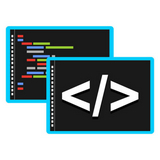
本文深入探讨 Go 语言中通道(channel)使用不当导致的死锁问题,特别是当同一 Goroutine 既是通道的发送方又是接收方时。通过分析一个典型的事件监听器场景,文章详细解释了死锁的根本原因,并提供了三种有效的解决方案:使用布尔标志进行退出控制、将处理器函数运行在独立的 Goroutine 中,以及利用带缓冲通道来避免阻塞。旨在帮助开发者更好地理解和规避 Go 并发编程中的常见陷阱。
在 Go 语言中,通道(channel)是 Goroutine 之间通信的关键机制。理解其工作原理,尤其是无缓冲通道的特性,对于编写健壮的并发程序至关重要。一个常见的陷阱是当同一个 Goroutine 试图向一个无缓冲通道发送数据,同时又期望从该通道接收数据时,便会发生死锁。
考虑以下代码示例,它模拟了一个事件监听器,其中 Run 方法在一个 Goroutine 中循环监听事件,并通过 handler 方法处理。当满足特定条件时,handler 尝试通过 exit 通道发送退出信号。
package main
import (
"fmt"
"time"
)
type A struct {
count int
ch chan bool
exit chan bool // 无缓冲退出通道
}
func (this *A) Run() {
for {
select {
case <-this.ch:
this.handler() // 在 Run Goroutine 中调用 handler
case <-this.exit: // Run Goroutine 监听 exit 通道
return
default:
time.Sleep(20 * time.Millisecond)
}
}
}
func (this *A) handler() {
println("hit me")
if this.count > 2 {
this.exit <- true // 在 Run Goroutine 中向 exit 通道发送数据
}
fmt.Println(this.count)
this.count += 1
}
func (this *A) Hit() {
this.ch <- true
}
func main() {
a := &A{}
a.ch = make(chan bool)
a.exit = make(chan bool) // 创建无缓冲通道
// 启动多个 Goroutine 向 a.ch 发送信号
go a.Hit()
go a.Hit()
go a.Hit()
go a.Hit()
// main Goroutine 自身调用 Run 方法
a.Run()
fmt.Println("s")
}运行上述代码,会观察到如下死锁错误:
hit me 0 hit me 1 hit me 2 hit me fatal error: all goroutines are asleep - deadlock! ...
死锁原因分析: 问题的核心在于 A.Run() 方法和 A.handler() 方法之间的交互。A.Run() 方法在一个 for 循环中运行,其中包含一个 select 语句,它同时监听 this.ch 和 this.exit 两个通道。当 this.ch 接收到信号时,A.Run() 会在当前 Goroutine 中直接调用 this.handler()。
在 this.handler() 方法中,当 this.count 达到特定值(例如大于 2)时,会尝试向 this.exit 通道发送一个 true 值 (this.exit <- true)。
由于 this.exit 是一个无缓冲通道,发送操作会阻塞,直到有另一个 Goroutine 从该通道接收数据。然而,唯一会从 this.exit 通道接收数据的 Goroutine 就是 A.Run() 方法所在的 Goroutine 自身。
因此,当 handler 在 Run Goroutine 中执行并尝试向 exit 发送数据时,Run Goroutine 已经被 handler 占用,无法同时在 select 语句中接收 exit 通道的数据。这就形成了一个经典的自发死锁:发送方和接收方是同一个 Goroutine,且通道无缓冲,导致发送操作永远无法完成。
理解了死锁的根源,我们可以采取多种策略来避免此类问题。以下是几种有效的改进方案:
如果退出信号仅用于控制当前 Goroutine 的内部循环,并且不需要与其他 Goroutine 进行显式通信,那么使用一个简单的布尔标志通常是更简洁、更高效的选择。
适用场景: 当 Goroutine 仅需根据自身内部状态或外部设置的一个简单标志来决定是否退出时。
package main
import (
"fmt"
"time"
)
type A struct {
count int
ch chan bool
exit bool // 使用布尔标志代替通道
}
func (this *A) Run() {
// 循环条件检查布尔标志
for !this.exit {
select {
case <-this.ch:
this.handler()
default:
time.Sleep(20 * time.Millisecond)
}
}
fmt.Println("Run Goroutine exited.") // 增加退出日志
}
func (this *A) handler() {
println("hit me")
if this.count > 2 {
this.exit = true // 设置布尔标志
}
fmt.Println(this.count)
this.count += 1
}
func (this *A) Hit() {
this.ch <- true
}
func main() {
a := &A{}
a.ch = make(chan bool)
go a.Hit()
go a.Hit()
go a.Hit()
go a.Hit()
a.Run()
fmt.Println("Done")
}解释: 在此方案中,我们将 exit 从通道类型改为 bool 类型。A.Run() 方法的循环条件直接检查 this.exit 标志。当 A.handler() 满足退出条件时,它只需将 this.exit 设置为 true。由于这只是一个简单的变量赋值,不会阻塞当前 Goroutine,A.Run() 的 select 循环会在下一次迭代时检测到 this.exit 为 true 并正常退出。这种方法避免了通道的同步开销,简化了控制逻辑。
如果 handler 函数可能执行耗时操作,或者它需要与其他通道进行复杂的交互,而 Run Goroutine 需要保持对其他事件的响应能力,那么将 handler 放入一个新的 Goroutine 中运行是一个好选择。
适用场景: handler 函数执行时间较长,或者其内部也包含可能阻塞的操作,不希望阻塞主事件循环 Goroutine。
package main
import (
"fmt"
"time"
)
type A struct {
count int
ch chan bool
exit chan bool // 重新使用无缓冲退出通道
}
func (this *A) Run() {
for {
select {
case <-this.ch:
go this.handler() // 在新的 Goroutine 中调用 handler
case <-this.exit:
return
default:
time.Sleep(20 * time.Millisecond)
}
}
}
func (this *A) handler() {
println("hit me")
if this.count > 2 {
this.exit <- true // 新的 Goroutine 向 exit 通道发送数据
}
fmt.Println(this.count)
this.count += 1
}
func (this *A) Hit() {
this.ch <-以上就是Go 并发编程:深入理解通道死锁与控制流优化的详细内容,更多请关注php中文网其它相关文章!

编程怎么学习?编程怎么入门?编程在哪学?编程怎么学才快?不用担心,这里为大家提供了编程速学教程(入门课程),有需要的小伙伴保存下载就能学习啦!

Copyright 2014-2025 https://www.php.cn/ All Rights Reserved | php.cn | 湘ICP备2023035733号